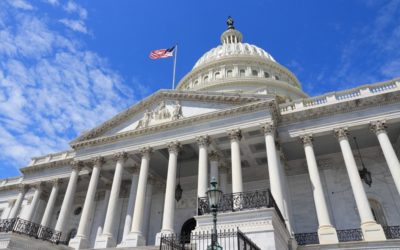The pandemic had a significant impact on Minnesota businesses. The combination of forced business closures, new employee safety standards along with supply chain disruptions and sharp increase in materials costs made it very difficult. The uncertainty made many uncomfortable. Concurrently, individuals were also impacted by the changes. The almost overnight changes and abrupt disruptions acted as a catalyst for many to evaluate personal and retirement savings. The result of this reflection has been the increased attention on savings, especially retirement savings.
This change in attitude is a contributing factor behind the Great Resignation. As more people re-enter the job market seeking higher paying positions with more attractive benefits, it has created a real challenge for professional service firms. Although many have already increased salaries, enhanced benefits, and more time off, it seems that more is needed to attract the best of the best. This is where the right employee sponsored retirement plan can make a big difference. Whether it’s a 401k, SIMPLE IRA, or other investment vehicle, there are several options to select from.
TRENDS IN RETIREMENT PLAN BENEFITS
For professional service firms that offer an employer-sponsored plan, there are several ways to elevate current benefits to the next level. Offering a way to save for retirement is a great first step; however, enhancing retirement benefits can go a long way toward employee recruitment and retention.
Willis Towers Watson (WTW) conducted a nationwide survey earlier in 2022 and found that many employers are helping their employees to achieve both short- and long-term financial goals. Flexibility is key.
- 38 percent of surveyed companies plan to offer alternative contribution strategies, like allowing participants to direct contributions to pay down student loan debt, fund emergency savings, or contribute to a health savings account.
- 28 percent planned to increase the plan’s automatic deferral amount and use other automatic deferral features to increase employee contributions.
- 23 percent are looking at allowing employees to contribute to the plan using bonus payments as well as salary and wages.
The findings reflect an interesting pattern. These companies are using flexibility in the retirement plan as a distinguishing benefit in the talent war.
This strategy comes at a good time. Most people improved investing habits during the last two years and want to see the money going further toward personal goals. One surprising finding from Fidelity’s survey was that more workers would rather get a higher employer match to the retirement plan than more paid time off.
CONSIDERATIONS FOR 401K PLANS
Nationwide, employee participation in 401k plans is at an all-time high. It’s the most widely known and available employer-sponsored retirement plan, and for good reasons. 401ks offer some of the most flexible contribution, investment, and benefit options. Some of the most popular features include:
- Roth option, which could be included as an employer match under SECURE Act 2.0 legislation
- Automatic enrollment and automatic escalation
- Financial education for employees
- Redirect contributions to an emergency savings account or to pay down student loans
It’s important to consider cost. 401ks can have higher administrative costs than other plans. It’s estimated that plan fees will range from 0.5 to 2 percent of plan assets, and smaller plans may be more susceptible to higher fees. Firm owners should look for, among other signals, a high fund expense ratio as a warning that plan fees might be too high.
Owners can reduce 401k plan administration costs in a few ways. Benchmarking plan fees is usually the place to start. An annual or bi-annual fee analysis can help to keep costs down, ensure fees are consistent with participants’ best interests and monitor service providers. More plan sponsors are navigating to lower-cost investment vehicles; for example, some actively managed mutual funds are deducted from employees’ investment holdings.
Then there’s the issue of ERISA compliance. In a professional services firm, most contributions tend to be from the highest earners; this makes sense, considering partner compensation. However, a plan that’s top-heavy – when more than 60 percent of plan assets are in key employee account balances – can fall out of line with ERISA requirements. Firm owners need a strategy to maintain Department of Labor compliance across a range of tests, which must be done annually.
SIMPLE IRAS
401ks aren’t the only option for retirement plans. Firm owners with less than 100 employees and no other retirement plan find that SIMPLE IRAs are an easier solution that often requires less maintenance. Both employers and employees make contributions. The firm wouldn’t need to file Form 5500 and discrimination testing isn’t required.
Eligible employees must earn at least $5,000 in compensation in the two previous years or the current year, though the firm can decide to lower or eliminate these thresholds. There is also a need to provide certain annual notices to employees, maintain timely deposits, and accurately calculate contributions.
While SIMPLE IRAs are comparatively easy and cost-effective to set up, the employer matching rules can get complicated. Firms must make either a two percent nonelective contribution for each eligible employee or a three percent matching contribution. Contributions are still required if cash flow is tight. And unlike 401k plans, participants cannot take out loans.
To establish a SIMPLE IRA, the firm would need to create and provide a written agreement to all employees with information about the plan. Then, an IRA account for each employee. The firm may choose the financial institution or allow employees to choose – either way is fine by the IRS.
The deadline to establish a SIMPLE IRA for the tax year is October 1.
SIMPLER ALTERNATIVES TO AN EMPLOYER-SPONSORED PLAN
There are other options available, depending on the firm size, structure, and needs.
- SIMPLE 401k Plans: As its name implies, this is a simpler version of the typical 401(k) plan. It’s only available to firms with 100 or fewer employees an established employer contribution level must be established. Employees are permitted to make contributions, too. Firms are prohibited from having another retirement plan and must file Form 5500 annually.
- Simplified Employee Pension (SEP) Plans: Any size company can offer a SEP. They’re easy to establish and annual filing requirements are unnecessary. Employees are 100 percent vested from the beginning, but they can’t contribute themselves. Only the employer contributes to a SEP. Employees can’t take out participant loans and there are contribution limits.
- Payroll Deduction IRA: This allows employees to set up their own traditional or Roth IRA and set up an automatic payroll deduction to fund it. Only employees contribute, and the employer has little involvement in the plan; there aren’t any filing requirements, and the employer doesn’t contribute. It’s purely to offer employees an incentive to easily save for their own retirement.
TAKE THE NEXT STEP
Offering retirement plans to employees often come with tax benefits. Newly established plans may be eligible for tax credits to offset the cost of plan setup, and employer contributions may be tax deductible. Further, firms with a low cash reserve can use retirement plans to supplement a compensation package; some plans can even be structured so that higher profits equal higher employer contributions.
Overall, the biggest benefit to firm owners – other than their own contributions – is fostering a collective of loyal, talented employees. An employer-sponsored plan with flexible, innovative benefit options can be a defining feature of your firm’s recruitment and retention strategy. If you have questions about the information outlined above or need assistance with a retirement plan issue, Smith Schaefer can help. For additional information, click here to contact us. We look forward to speaking with you soon.



